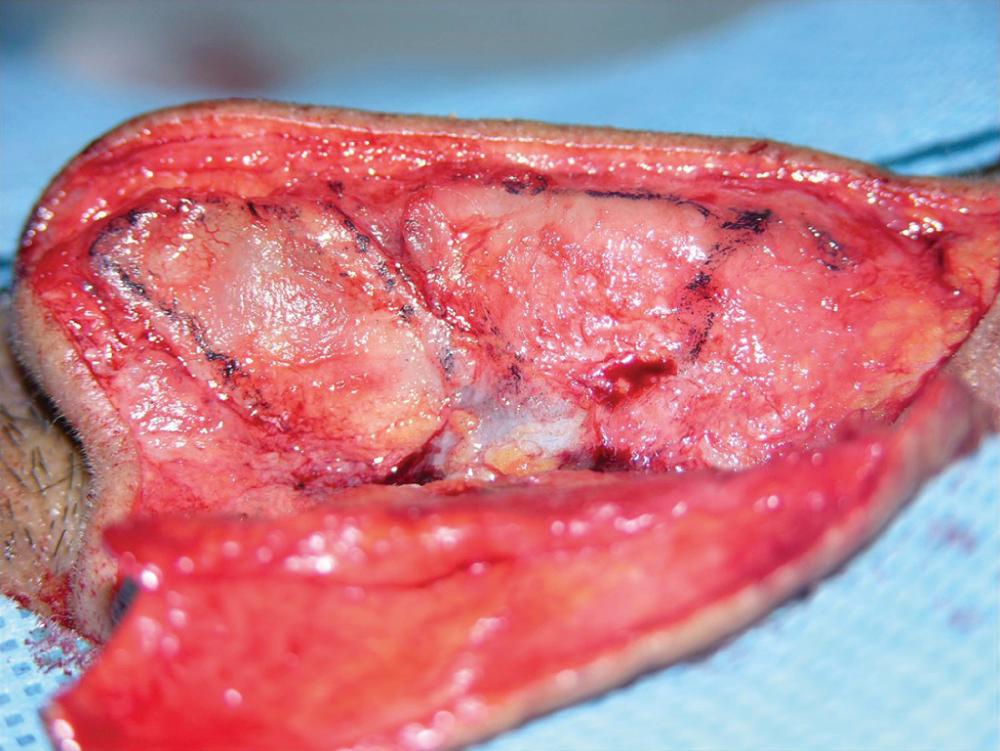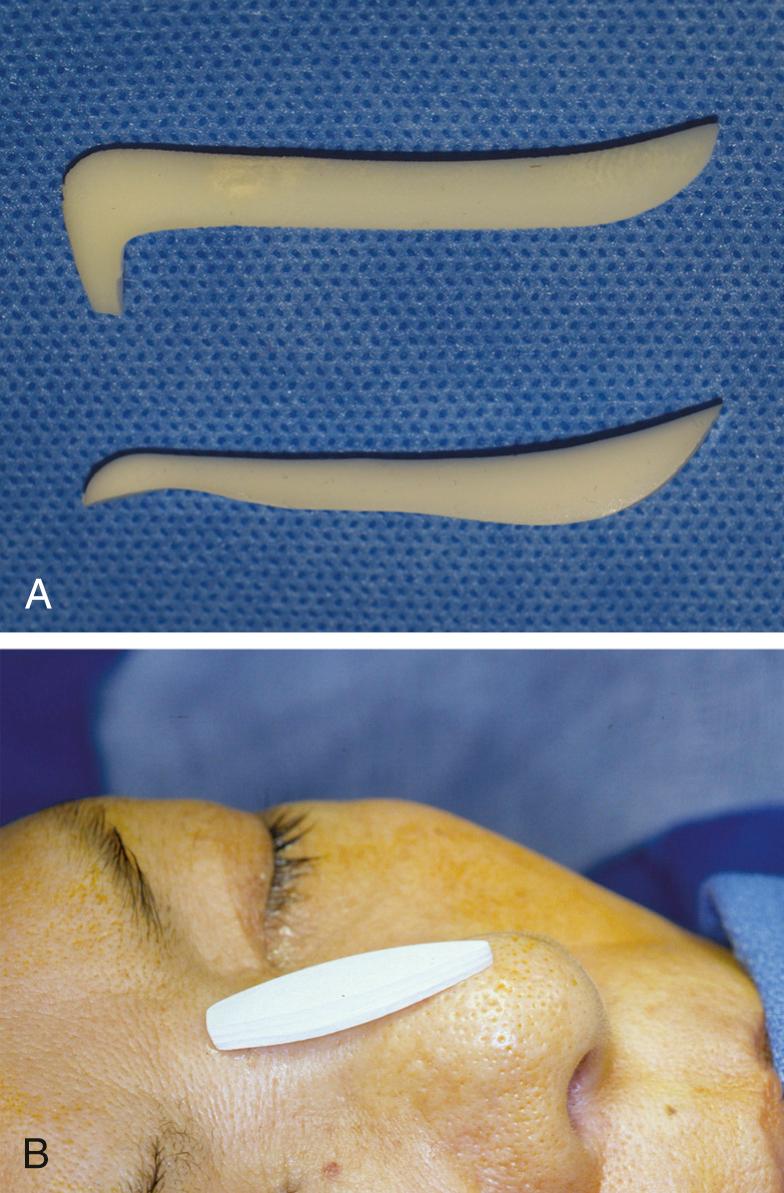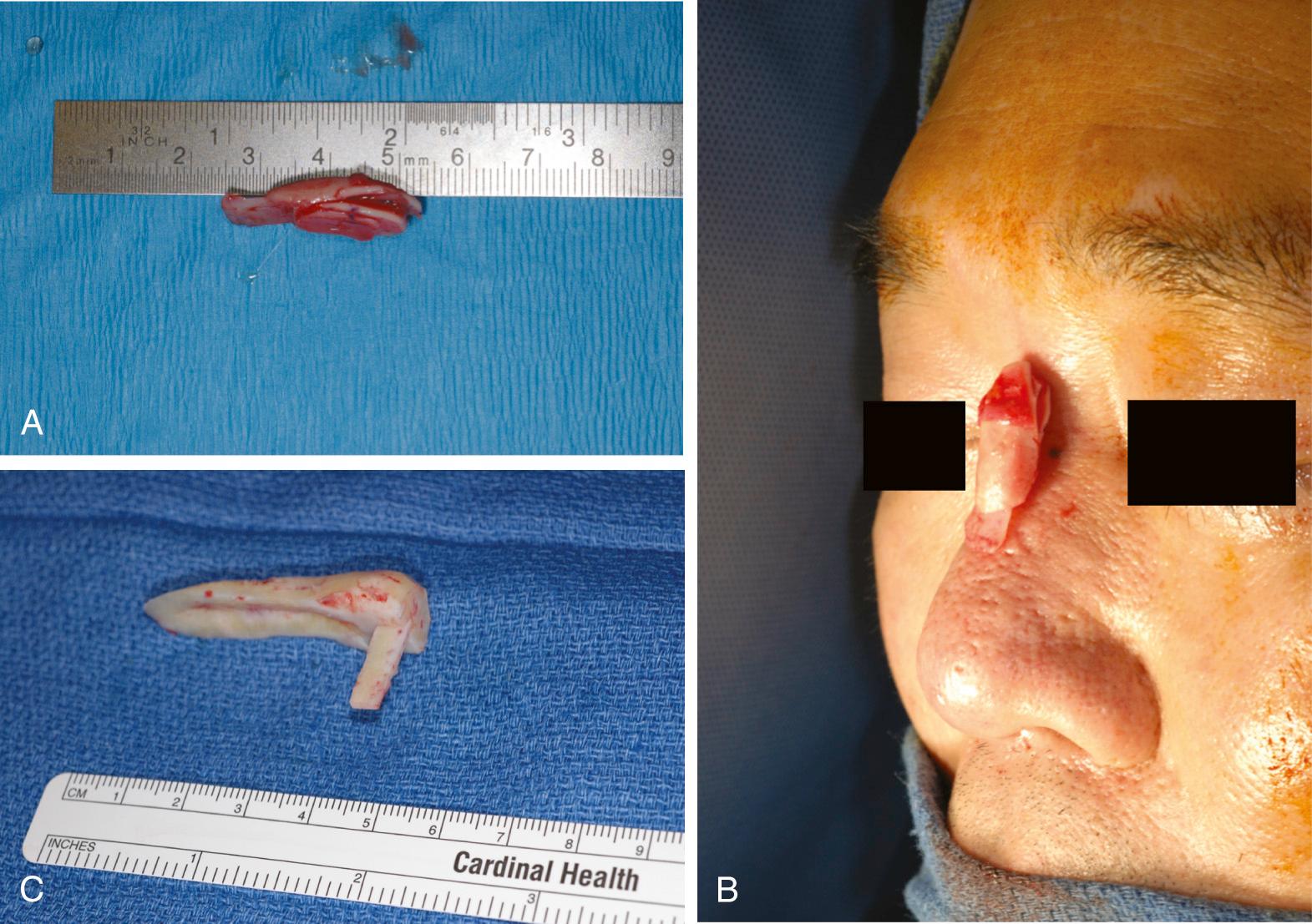Physical Address
304 North Cardinal St.
Dorchester Center, MA 02124
Non-Caucasian patients have differences that extend beyond anatomy. Cultural norms, communication, expectations, and aesthetic definitions all must be considered in this patient group.
Anatomic variants preclude certain common surgical maneuvers performed with Occidental patients.
Aesthetic goals in non-Caucasian patients are not necessarily to be westernized.
Dorsal profile management and tip refinement remain the workhorse maneuvers in non-Caucasian rhinoplasty.
Alloplastic implantation should be done under judicious decision on the dorsum without any undue pressure on the overlying skin in thick-skinned patients.
Tip grafting rather than resection is the preferred method for creating elegance and definition of the tip.
In alar base surgery, the dictum is a modest change while preserving the ethnic identity.
Complications associated with alloplastic implantation or autogenous rib cartilage graft to the dorsum need special attention and care for prevention and effective treatment.
The primary objective in a non-Caucasian rhinoplasty is fundamentally the same as with any other rhinoplasty: to create a nose that allows facial harmony and balance to radiate from a person's expression. It is not to sculpt a nose that draws attention to itself nor is it an attempt to define an individual's beauty. Certain aesthetic principles are ubiquitous in various ethnic cultures, such as symmetry and youth. The nose, on the other hand, has many unique nuances that can characterize a particular ethnic beauty. Understanding these specific nasal features along with the cultural nuances and social framework surrounding the patient is paramount in a successful non-Caucasian rhinoplasty. A transplanted elegant and sculpted Occidental nose on an Asian face, for instance, will rarely appear natural or aesthetically pleasing.
Nearly as much variability exists among noses from a single ethnicity as from different ones. This lack of uniformity has been demonstrated via anthropometric measurements and is likely the result of different familial lineages and cross-cultural mixings. Obviously no single description can be applied to all non-Caucasian noses, but some general features are common and distinct from the Occidental nose. Common features of ethnic noses are lack of definition, broad and amorphous tips, and a flat nasal root. Hence the goal is to create improved elegance of the nose through sharper lines, tip-defining points, and clear shadows. Dorsal augmentation, tip refinement, and narrowing of the pyramid are typical goals in rhinoplasty of the non-Caucasian nose. Beyond these generalities, however, are subtleties that can be understood only through continuous exposure to these types of patients. Unique considerations apply with certain skin characteristics, the degree of soft tissue contracture, integrity of lower lateral cartilages (LLCs), and modifications of normal aesthetic subunits.
The ethnic patient also comes to medical attention with idiosyncrasies in communication, expectations, and emotional responses to surgical outcomes. The language barrier may leave more ambiguity in terms of patient wishes and can be difficult to overcome through a translator. Moreover, vocabulary and superlatives often mislead the dialogue. Expectations and the manner in which patients respond to surgical outcomes vary among cultures. For example, Koreans tend to be overt or dramatic in their postoperative reactions. Japanese, on the other hand, are characteristically more reserved and introverted; they are less likely to share openly their disappointment, although those sentiments may be prevalent.
The term non-Caucasian covers a broad demographic group, so the surgeon cannot make uniform guidelines that cover it in its entirety. African American, Asian, and Hispanic individuals represent a large portion of this population, and major distinctions are apparent between their noses and the Occidental nose. These three ethnic groups also share many common traits in terms of nasal anatomy, but to varying degrees. In some respects, these cultures span a continuous spectrum of deviation from those in the Occident in terms of skin thickness, size and strength of nasal cartilages, and nasal tip definition.
Initial analysis for all rhinoplasty patients must be thorough and complete, but special focus on a few areas must be made with this group. Although it is true that most ethnic noses have thicker skin, this cannot be generalized uniformly, because variability exists and must be accounted for. Furthermore, excess skin thickness can be found in different areas, such as the alar lobules. The size, strength, and integrity of the LLCs must be analyzed, because deficiencies here can lead to an altered surgical plan. Nasal bones are often shorter than those of Caucasians, and narrowing through osteotomies is often not fruitful. The nasal platform—the bony nasal sill and piriform aperture—is often deficient and in need of augmentation. These important distinctions are largely determined through careful palpation of the nose, and this part of the examination cannot be overemphasized in this patient population.
Specific anatomic features characteristic of the non-Caucasian nose include thicker skin with abundant subcutaneous fibrofatty tissue, a weaker cartilaginous framework, short nasal bones, an underdeveloped anterior nasal spine, low nasal sill, smaller quadrilateral septal cartilage, and inferior turbinate hypertrophy ( Fig. 33.1 ). The associated cutaneous findings include a wide and underprojected dorsum; a low radix and nasion; a nasal tip that is bulbous, lacking definition, underprojected, and either ptotic or overrotated (short nose); a short columella; and an alar base that is wide and flaring ( Table 33.1 ). The thicker skin can be an important differentiating feature, because it allows for great acceptance of nasal implants, including alloplastic implants, and it camouflages augmentation grafts in a more natural fashion. It also obscures minor changes performed on the cartilaginous framework, necessitating overcorrection as a rule.

| Site | Unique Characteristic |
|---|---|
| Radix | Low and inferior; short nasal bones |
| Dorsum | Underprojected and short |
| Tip | Bulbous, poor definition, underprojected, and weak lower lateral cartilages |
| Ala | Thick and flared with short columella |
| Skin | Thick |
| Septum | Straight, less volume, and thinner; small anterior nasal spine |
| Inferior turbinate | Hypertrophied |
In addition to the thicker tip skin, the LLCs are weak and pliable, making the creation of tip definition a challenging task. Cephalic trim and dome-binding sutures are often inadequate; reinforcing struts and projecting cap grafts tend to be more effective. The short columella merits some consideration when placing a transcolumellar incision for an external approach. Because the tip often requires some projection, the surgeon should place the transverse incision slightly lower, allowing it to rise with increased tip projection. Intranasally, most non-Caucasian noses are characterized by a straight septum with widely patent internal nasal valves, large inferior turbinates, and a low bony nasal sill. The size of the quadrilateral septal cartilage is typically smaller and thinner, ironically leading to a dearth of desirable donor material in a setting where augmentation is often needed. Consequently, one of the primary sources of augmentation material in Asia remains alloplastic materials.
The short and wide nasal bones make traditional osteotomies more challenging because the bone cuts easily drift into the ascending process of the maxilla. They also predispose to the inverted-V deformity during the hump reduction. Fortunately, the wide internal valve and thick overlying skin make clinical nasal obstruction from this etiology a rare entity in non-Caucasians. The flat nasal bones and nasal root extend inferiorly onto the cartilaginous dorsum; therefore most patients require augmentation to the dorsum as well as to the radix area.
The ethnic patient is generally at a greater risk for unfavorable scarring from skin incisions, be it from pigmentation problems or hypertrophic scarring or even keloid formation. Although transcolumellar scars usually heal well, this is more applicable to donor-site scars on the ear and chest. A careful history is warranted preoperatively.
The ethnic patient generally does not desire a Western nose; most individuals would like a nose that has better balance with their cultural features and preserves their heritage. This is especially important to bear in mind during the initial nasal analysis because the typical angles and landmarks we use for the “aesthetic” nose are derived from Western faces and do not necessarily apply across all ethnicities. For example, the nasion, the nasolabial angle, and the alar base width are defined differently, with “ideal” measurements that are not the same throughout cultures. Transplanting those ideals onto the ethnic nose will create an unnatural and artificial appearance. Similarly, this group of patients may complain of a flat nasal tip, and although more definition would be viewed favorably, these patients usually still desire a softer and rounder tip than their Western counterparts. In addition, the surgical steps applied to the Western nose to achieve a given goal may not be valid and productive in the thicker-skinned ethnic nose.
Cultural definitions of beauty vary widely, and it is not the desire of all non-Caucasians to acquire Occidental features nor do the aesthetic norms of Western beauty transition to all ethnic faces. An attractive Asian nose, for example, has a slightly lower nasion, which is somewhat below the upper eyelash line. Textbook normative data of the radix and nasion describe the supratarsal crease for the Caucasian face as the ideal landmark, best matching the angular topography of the Caucasian face. Asians have a flatter contour, and on an Asian face, the high radix would appear unnatural. Because the dorsum is often flat and wide, it occasionally requires lateral osteotomies to narrow the bony aperture in addition to the dorsal augmentation. In regard to tip aesthetics, projection , rotation , and volume are the three most important factors to consider. These three factors influence one another in creating an ideal tip shape. The angulated tip with clear tip-defining points is not the ideal appearance for most non-Caucasians. A more rounded and lobular tip is preferred in this group because it best blends with the cherubic facial shape and cheekbones. It is common among these non-Caucasian patients for a retruded premaxilla to coexist with the small nose, creating a retrusive columella and an acute nasolabial angle. A plumping graft to efface the nasolabial angle can improve balance and create the illusion of tip rotation. A wide alar base with flaring of the alar lobules can be found in African-Americans and descendants of Southeast Asians (Filipinos and Malaysians). Northeast Asians (Japanese and Koreans) tend not to have the same degree of alar flaring.
For the ethnic patient, nuances exist with regard to the motivation for undergoing rhinoplasty. In addition to the common concerns with all rhinoplasty candidates, such as expectations and psychosocial motivations, the ethnic patient may also be concerned about seeming to deny or abdicate his or her cultural heritage. This may be a personal concern or a fear that others may perceive the patient as acting on such a motivation; either way, it is an important consideration in the preoperative consultation.
Dorsal augmentation is a common task in non-Caucasian rhinoplasty. Although the dorsum appears wide, lateral osteotomies are only rarely needed, because the midline augmentation creates the illusion of narrowing. For many years in Asia, the alloplastic, L -shaped silicone strut or L-strut was inserted to augment the dorsum and lengthen a short nose. The tension on the tip occasionally proved too much for even the thicker Asian skin, and cover breakdown with subsequent implant extrusion was unfortunate sequelae. Today, many surgeons use alloplastic materials for the dorsal upper two-thirds and autologous tissue for the tip region (e.g., tip or cap grafts, columellar struts, and caudal extension grafts).
The surgical approach for augmentation rhinoplasty is largely influenced by the need for tip work. When only dorsal access is needed, an endonasal route is usually used, either through an intercartilaginous approach or via an extended septoplasty incision. When tip manipulation is required, the external approach can offer excellent control. This is particularly true when the tip is in need of projection and lengthening as well.
Before deciding which augmentation material to use, numerous factors must be considered: the amount of augmentation needed, the availability of septal and conchal cartilages, skin thickness, and certainly the patient's preferences. The potential disadvantages of alloplastic implants are widely recognized, but the severity and likelihood of occurrence of complications remain controversial. The risk of rejection and extrusion of alloplastic implants is of paramount concern, but contemporary porous materials, particularly when used under thicker ethnic skin, may reduce that risk. Thorough patient education and informed consent are imperative during this preoperative consultation. Common alloplastic implants include Medpor (porous high-density polyethylene; Porex, Newnan, GA), expanded polytetrafluoroethylene, and silicone ( Fig. 33.2 ).

Autogenous tissue remains the gold standard but can have limitations and potentially significant comorbidities. Limited availability is a first concern in non-Caucasian noses. Even in primary surgery, the volume of available septum is limited, and conchal cartilage is generally less predictable in terms of resorption. Costal cartilage has an unlimited supply but is associated with greater morbidity and investment. Long-term warping of the rib graft is the primary complication and is best avoided by carefully carving out the central core of the graft or by obliquely cutting the rib into symmetrical cortical portions.
Patients in need of only a limited degree of dorsal augmentation are usually excellent candidates for autologous implants with septal or conchal cartilages. The surgeon must carefully inspect and palpate the septum to verify the presence of adequate cartilage. With revision rhinoplasties, the volume of native septal cartilage cannot be counted on, and alternative sources should be planned. It is usually necessary to stack multiple layers of cartilage on one another, including ear cartilage; the surgeon should suture-secure the pieces of cartilage together and carefully bevel all the edges ( Fig. 33.3A and B ). Rib cartilage affords adequate volume to augment major deficiency of the dorsum and provides the rigidity needed to lengthen the nose through a caudal extension graft or strong L-strut ( Fig. 33.3C ).

Become a Clinical Tree membership for Full access and enjoy Unlimited articles
If you are a member. Log in here